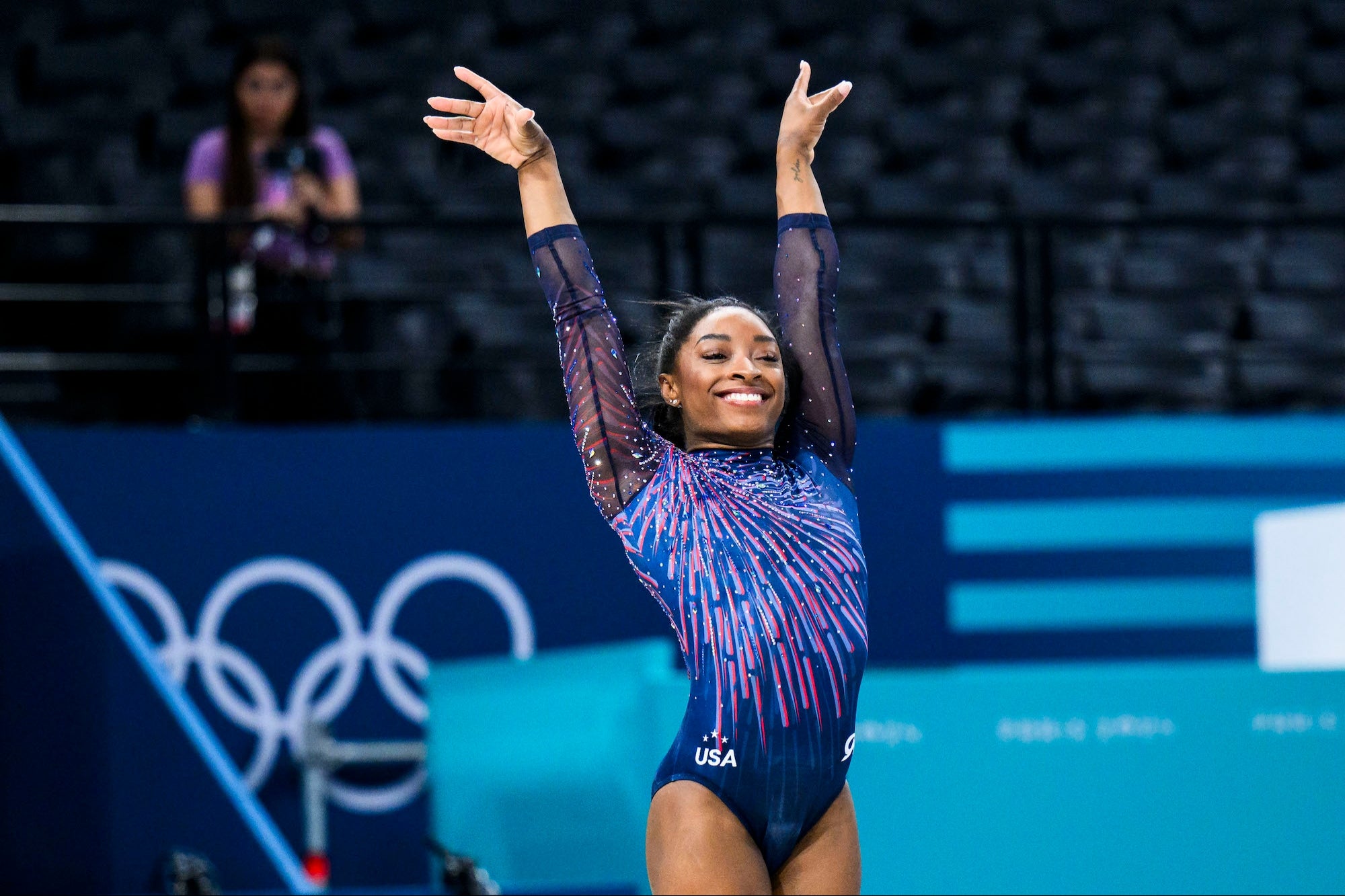Secrets to Success at Work, From Olympians Like Simone Biles

Opinions expressed by Entrepreneur contributors are their own.
The U.S. boasts the most Olympic medals thanks to some awe-inspiring performances from its top athletes. Swimmer Michael Phelps, who competed in five Olympic Games spanning Sydney 2000 to Rio 2016, is the most decorated Olympian in history with 28 medals, and Simone Biles is the most decorated gymnast in U.S. history, earning an “unprecedented” four gold medals in the floor exercise, vault, all-around and team segments at the Rio Games.
Now, the Paris 2024 Olympics are underway, and although Phelps is retired — passing the proverbial torch to Katie Ledecky, who might leave the City of Lights as the most decorated female Olympic swimmer of all time — Biles is competing again, four years after she withdrew from the Tokyo Olympics and began an important dialogue about athletes’ mental health.
Image Credit: Tom Weller/VOIGT | Getty Images
Over the years, we’ve celebrated these athletes for their inspiring physical and mental triumphs, but there’s another story that should be attracting attention too. And, in practical terms, it’s one with particular relevance to your own daily challenges and wins at work. It’s the story of innovation.
Related: Olympians Are Calling the Food in Paris a ‘Disaster’ — and One Team Is Flying in Its Own Chef
Olympians, innovation and you…really? Absolutely. Without innovation, Biles would not be executing maneuvers that no other competitor, male or female, can even contemplate. Phelps would not have left Rio with his career-topping 23rd gold medal, and Ledecky wouldn’t stand to break yet another record in the sport.
Even if your personal athletic career involves nothing more strenuous than watching from your living room couch as the best of the best compete live in Paris this summer, you should consider how their successes can translate to creative breakthroughs in your own performance.
By following a few Olympic-level innovation principles, you too can “medal” in today’s grueling workplace competitions.
1. Seek group support for your individual creativity
“At this point in time, nobody can beat Simone Biles,” Nastia Liukin, a 2008 Gold Medalist, told The New York Times in 2016.
Coach Aimee Boorman notes that Biles’ routines require less running and allow her to do more tumbling than other gymnasts’ routines do. It is this innovative combination of roundoff, back handspring, double layout, half-turn and landing that makes Biles the world’s best. Where most competitors win by fractions of a point, Biles wins by one or two points.
Still, the Olympian acknowledges the value in competing as a team.
After Biles stepped aside at the Tokyo Games, she told her teammates that they were well-trained and ready to compete without her, People reported. The team didn’t win gold, but Biles was “very proud” of the silver medal nevertheless, saying, “I owe this to the girls, it has nothing to do with me.”
Related: Follow These 9 Olympic Athletes on Instagram for Some Epic Inspiration
2. Build on the innovation that others have already discovered
Phelps embodies a unique blend of physical endowments, exquisite technique and determination. Less obvious are the decades of innovation that prepared the way for his dominance. Take his mastery of the underwater dolphin kick that has so often propelled him to the medalists’ podium.
Phelps has benefited from innovations that go back at least to David Armbruster, who coached the University of Iowa swim team from 1917 to 1958. According to the International Swimming Hall of Fame, Armbruster first saw a demonstration of the dolphin kick technique in 1911 and then in the 1930s started encouraging his swimmers to use it instead of the traditional frog kick. Others also played a role in the development of the kick, including the physicist Volney Wilson, who was a swimming enthusiast as well as a contributor to the World War II project that produced the first atomic bomb.
What’s more, in 2012, Johns Hopkins professor of mechanical engineering Rajat Mittal took an interest in analyzing the stroke and lent his technical support to the U.S. swim team. TV viewers only see the athletes striving for greatness for two intense weeks, but all of this history and behind-the-scenes activity is actually a bigger part of the story.
Related: How a Problem at the Sydney Olympic Games Led to an Innovation in Commercial Real Estate
3. Dream, and then work like crazy
Daniel James Brown, in his beautiful book, The Boys in the Boat: Nine Americans and Their Epic Quest for Gold at the 1936 Berlin Olympics, recounted a scene in which the University of Washington coach conceived the audacious goal of defeating the top U.S. rowing teams and pulling all the way through to the 1936 Olympic Gold Medal in Munich.
Unsurprisingly, years of all-consuming toil separated that inspiring reverie on the banks of Lake Washington and the historic moment that the Americans became world champions under Adolf Hitler’s baleful gaze. But the excitement of victory often eclipses all of the effort that led to it.
You should never forget that it’s effort that turns dreams into reality. While many breakthroughs begin with an idea, the ones that make a difference are realized through disciplined practice. Go ahead and dream, but then get down to work.
Related: Famed Broadcaster Al Michaels’ Voice Will Be AI-Generated for Summer Olympics Coverage
You might get a head start by considering three important questions:
- Who are the teammates who can push you to find that next level of performance?
- What are the innovations that you can build on?
- How much work will it really take to turn your idea into results?
By acting on your answers, you can be the office Olympian who wins the workplace gold.



